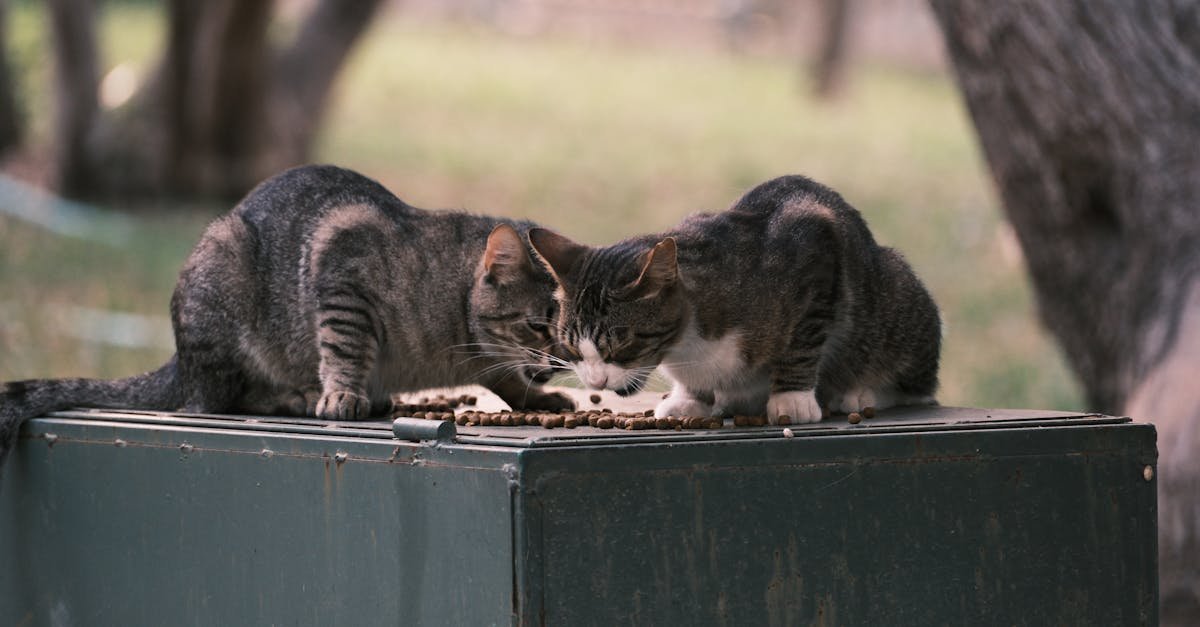
Solving Common Pet Food Issues: How to Keep Ants Out of Pet Food
Estimated reading time: 8 minutes
Key Takeaways
- Ants are attracted to pet food due to scent, residues, and moisture.
- Store pet food in airtight containers and keep feeding areas clean.
- Use ant-proof bowls or natural deterrents like cinnamon and vinegar.
- Dogs should not eat cat food due to nutritional imbalances.
- Cats may stop eating wet food due to dental issues, spoiled food, or stress.
Table of Contents
- Introduction
- How to Keep Ants Out of Pet Food
- Can Dogs Eat Cat Food?
- Why Has My Cat Stopped Eating Wet Food?
- General Tips for Managing Pet Feeding Issues
- Conclusion
- Frequently Asked Questions
Introduction
Every pet owner knows the struggle of dealing with food-related challenges. Whether it’s ants swarming your pet’s bowl, your dog sneaking cat food, or your cat suddenly turning up their nose at wet food—these issues can be frustrating and concerning.
One of the most common problems is ants invading pet food. Not only is this unsanitary, but it can also make mealtime stressful for both you and your pet. In this guide, we’ll focus on how to keep ants out of pet food, along with solutions for other feeding dilemmas like can dogs eat cat food and why your cat stopped eating wet food.
By the end of this post, you’ll have practical, vet-approved strategies to ensure your pet’s meals stay clean, safe, and hassle-free.
How to Keep Ants Out of Pet Food
Why Ants Are Attracted to Pet Food
Ants are relentless when it comes to food—especially pet food. They’re drawn to the strong scent, leftover residues, and moisture in kibble or wet food. If your pet’s bowl is left out or spills aren’t cleaned up, ants will quickly find their way in.
Sources:
– LaJaunies Pest Control
– Eukanuba
Effective Ways to Prevent Ants
1. Store Food in Airtight Containers
- Dry pet food should always be kept in sealed plastic or metal containers.
- This blocks ants and keeps food fresh longer. For more tips on proper storage, check out our guide on Pet Nutrition 101: Crafting Healthy Diets for Dogs and Cats.
Source: Two Bostons
2. Use Ant-Proof or Elevated Bowls
- Moated bowls have a water barrier that ants can’t cross.
- Slippery or elevated bowls make it harder for ants to climb.
Sources:
– Amy Ever After
– LaJaunies Pest Control
3. Keep Feeding Areas Clean
- Wipe up spills immediately.
- Wash bowls after every meal to remove scent trails. For a pet-safe cleaning routine, explore our Ultimate Guide to Pet Safety.
Source: Neater Pets
4. Natural Ant Deterrents
- Cinnamon or diatomaceous earth (sprinkle around the bowl, not in food).
- Vinegar solution (wipe floors to disrupt ant trails).
- Petroleum jelly (apply a thin ring around the bowl base).
Source: LaJaunies Pest Control
Quick Fixes for Ant Infestations
- Discard contaminated food—don’t risk your pet’s health.
- Use cornstarch to separate ants from kibble before transferring to a clean container.
- Call pest control if the problem persists. For severe cases, our Pet First Aid Guide covers emergency steps.
Sources:
– Eukanuba
– Western Exterminator
Can Dogs Eat Cat Food?
Key Differences Between Dog and Cat Food
| Feature | Dog Food | Cat Food |
|---|---|---|
| Protein | Moderate | High |
| Fat | Moderate | High |
| Taurine | Not always added | Essential |
Source: Vets Now
Risks of Dogs Eating Cat Food
- Digestive upset (vomiting, diarrhea).
- Obesity or pancreatitis from high fat content.
- Nutritional imbalances over time. Learn more about Pet Weight Management to avoid long-term health issues.
Source: Nature’s Logic
How to Prevent It
- Feed pets separately.
- Store cat food out of reach (e.g., high shelves).
- Train dogs to stay away from the cat’s bowl.
Source: Vets Now
Why Has My Cat Stopped Eating Wet Food?
Possible Reasons
- Dental pain (check for signs of discomfort).
- Spoiled food (cats are picky about freshness).
- Changed preferences (texture, flavor, brand).
- Stress or illness (consult a vet if refusal lasts). For senior cats, our Senior Cat Health Guide offers additional insights.
Source: Two Bostons
How to Fix It
- Try different flavors or brands.
- Check food freshness (refrigerate opened cans).
- Schedule a vet visit if the issue persists.
General Tips for Managing Pet Feeding Issues
1. Proper Food Storage
- Dry food: Keep in airtight containers in a cool, dry place.
- Wet food: Refrigerate and use within 5–7 days.
Source: Two Bostons
2. Monitor Eating Habits
- Sudden changes in appetite may signal health problems.
3. Consult a Vet When Needed
- Persistent issues (like refusal to eat) require professional advice.
Conclusion
Keeping ants out of pet food, preventing dogs from eating cat food, and troubleshooting a cat’s sudden dislike of wet food are all manageable with the right strategies. By storing food properly, maintaining cleanliness, and staying observant, you can ensure your pets enjoy safe, stress-free meals.
If you’ve dealt with these issues before, share your tips in the comments! For more pet care advice, explore our related guides.
For severe pest problems or health concerns, always consult a professional.
Frequently Asked Questions
Why do ants like pet food?
Ants are attracted to the strong scent, moisture, and food residues in pet food. They follow scent trails to locate food sources.
Is cat food bad for dogs?
Yes, cat food is not suitable for dogs due to higher fat and protein levels, which can cause digestive issues and long-term health problems.
What to do if cat stops eating wet food?
Check for dental issues, ensure food is fresh, try different flavors, and consult a vet if the problem persists.
